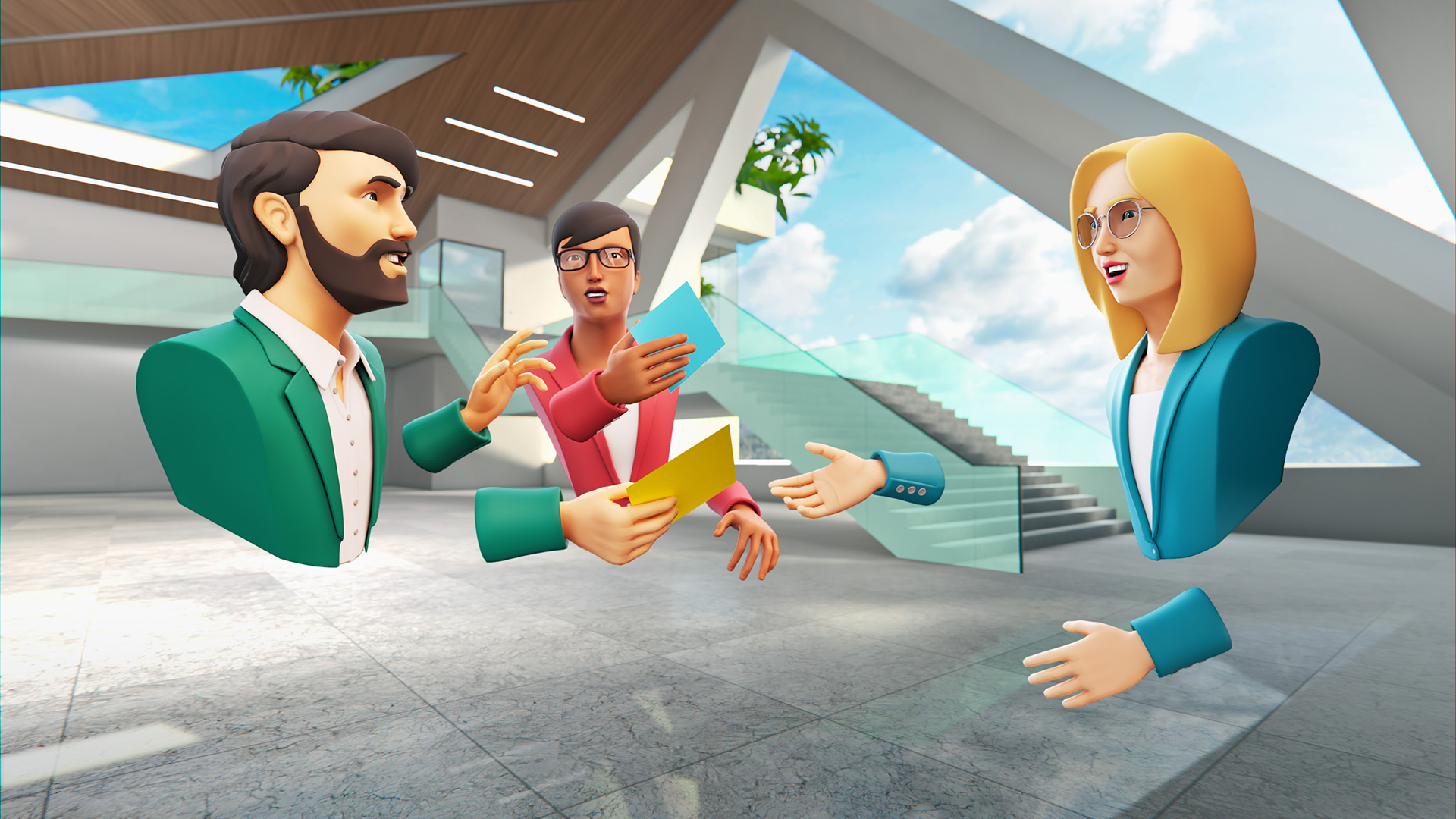At this year’s Mobile World Congress, Qualcomm CEO Cristiano Amon championed virtual reality and artificial intelligence as the future of business. While not the first to do so, his excitement reflects how we’re living in a time of rapid technological advancement: Faster, more efficient chips are helping reduce VR headset sizes and effortlessly render realistic virtual environments. Simultaneously, they’re taking us into a new era of AI, in which generative AI chatbots like GPT-4 are readily available to anyone with a smartphone.
But what happens when you combine the immersive power of the metaverse and the cognitive prowess of AI? These two groundbreaking technologies have largely developed independently. Put them together and you have some tantalizing possibilities for workplace collaboration.
Bots that take care of meeting admin
In 3D virtual workspaces, we aim to make interactions feel as engaging as face-to-face encounters. At the same time, there’s an opportunity to leave behind some of the more mundane aspects of meetings and use new digital productivity tools to streamline our work. In this respect, we see integrated AI meeting assistants taking on the role of taking notes, capturing action items, and sharing meeting outcomes. Imagine asking a bot to retrieve and share files or automatically schedule follow-up meetings based on participants’ availability.
Conversational AI avatars that help us ideate and learn
AI meeting bots could also enhance virtual meetings with their conversational and reasoning skills. As virtual colleagues – perhaps taking the form of in-room avatars – they could brainstorm, plan, and generate ideas with us. They could simulate customer interactions to refine sales pitches, or even help on board and train new employees.
Glue avatars already use AI facial animation and lip-syncing technology to closely mimic people’s behaviors and features. This capability could be combined with generative AI to create intelligent, human-like avatars that understand and respond to user emotions and serve as helpful companions in the workplace.
Delivering great customer experiences
In the same vein, AI bots can function as virtual assistants within digital showrooms. We imagine intelligent assistants capable of engaging with customers in a more personalized manner, guiding them through a product assortment, and readily answering questions about product features, pricing, and availability.
This seamless integration of AI technology not only elevates the customer experience but also helps businesses establish a stronger connection with their clientele, fostering loyalty and increasing customer satisfaction.
Assisting 3D workspace design
3D designers love to create digital replicas of real-world spaces or dream up new ones. In the metaverse, they will benefit from the assistance of generative AI technology in the design process. AI models like Google’s DreamFusion and Nvidia’s Magic3D can, for instance, generate 3D objects from text inputs. Generative AI could also serve as a ‘force multiplier’ for creators, learning from their preferences and use cases and building new spaces and 3D objects tailored to their needs.
Conclusion
The fusion of AI and VR technologies has the potential to revolutionize the way we work, learn, and interact in the virtual world. By combining the immersive capabilities of the metaverse with the cognitive power of AI, we can create dynamic 3D workspaces that not only streamline administrative tasks but also enhance collaboration, customer experiences, and even the design process itself.
Ready to learn more about team engagement in VR?
Book a demo to explore VR business opportunities
for your business.




